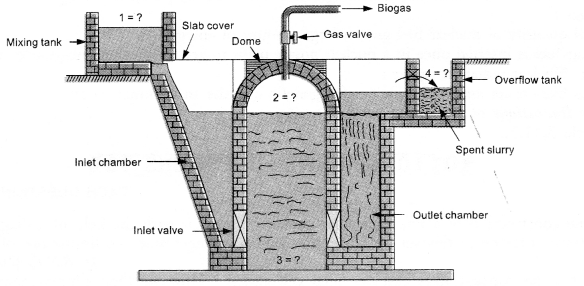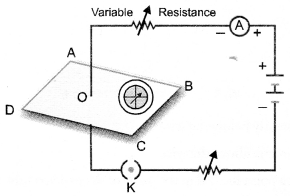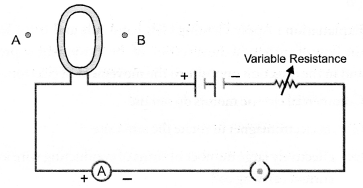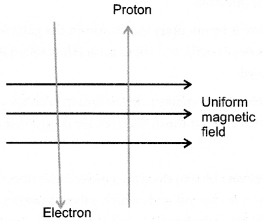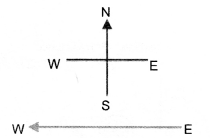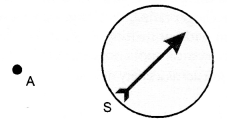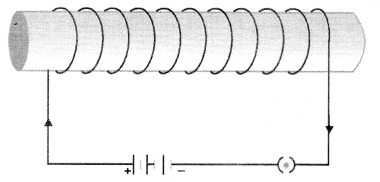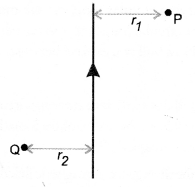NCERT Exemplar Solutions for Class 10 Science Chapter 14 Sources of Energy
These Solutions are part of NCERT Exemplar Solutions for Class 10 Science. Here we have given NCERT Exemplar Solutions for Class 10 Science Chapter 14 Sources of Energy
Question 1.
Which of the following is a non-renewable source of energy ?
(a) Wood
(b) Sun
(c) Fossile fuels
(d) Wind
Answer:
(c).
More Resources
- NCERT Exemplar Solutions for Class 10 Science
- NCERT Solutions for Class 10 Science
- Value Based Questions in Science for Class 10
- HOTS Questions for Class 10 Science
- Previous Year Question Papers for CBSE Class 10 Science
Question 2.
Acid rain happen because
(a) Sun leades to heating of upper layer of atmospher
(b) burning of fossil fuels release oxides of carbon, nitrogen and sulphur in the atmosphere
(c) electrical charges are produced due to friction amongst clouds
(d) earth atmosphere contains acids.
Answer:
(c).
Explanation : When oxides of carbon, nitrogen and sulphur react with water vapours in the atmosphere, they form carbonic acid, nitric acid and sulphuric acid respectively. These acids come down to the earth with rain.
Question 3.
The rain containing these acids is called acid rain.
Fuel used in thermal power plants is
(a) water
(b) uranium
(c) biomass
(d) fossil fuels
Answer:
(c).
Question 4.
In a hydro power plant
(a) Potential energy possessed by stored water is converted into electricity
(b) Kinetic energy possessed by stored water is converted into potential energy
(c) Electricity is extracted from water
(d) Water is converted into steam to produce electricity
Answer:
(a).
Explanation : Sequence of energy transformation in hydro power plant :
Question 5.
Potential energy of water stored in a dam Kinetic energy of falling water -» K.E. of rotation of turbine -> electrical energy. Which is the ultimate souce of energy ?
(a) Water
(b) Sun
(c) Uranium
(d) Fossil fuels
Answer:
(b).
Explanation : All forms of energy are derived from the sun.
Question 6.
Which one of the following of energy leads to least environmental pollution in the process of its harnessing and ultisation ?
(a) Nuclear energy
(b) Thermal energy
(c) Solar energy
(d) Geothermal energy
Answer:
(c).
Question 7.
Ocean thermal energy is due to
(a) energy stored by waves in the ocean
(b) temperature difference levels in the occean
(c) pressure difference at different levels in the ocean
(d) tides arising out in the ocean
Answer:
(b).
Question 8.
The major problem in harnessing nuclear energy is how to
(a) split nuclei ?
(b) sustain the reaction ?
(c) dispose off spent fuel safely ?
(d) convert nuclear energy into electrical energy ?
Answer:
(c).
Explanation : This is because even spent fuel (nuclear waste) continues to emit harmful radiation.
Question 9.
Which part of the solar cooker is responsible for green house effect ?
(a) Coating with black colour inside the box
(b) Mirror
(c) Glass sheet
(d) Outer cover of the solar cooker
Answer:
(c).
Explanation : Green house effect in a region occurs when heat radiation (infra-red radiation) are trapped in that region. When sunlight enters the solar cooker through a glass sheet, then the objects inside the solar cooker emit heat radiation (or infra-red radiation) due to their increased temperature. These radiations have long wavelengths and hence less energy. Therefore, they cannot pass through the glass sheet. Hence, interior of the solar cooker becomes warm due to the trapping of these radiation.
Question 10.
The main constituent of biogas is
(a) methane
(b) carbon dioxide
(c) hydrogen
(d) hydrogen sulphide
Answer:
(a).
Question 11.
The power generated in a windmill
(a) is more in rainy season since damp air would mean more air mass hitting the blades
(b) depends on the height of the tower
(c) depends on wind velocity
(d) can be increased by planting tall trees close to the tower
Answer:
(c).
Question 12.
Choose the correct statement
(a) Sun can be taken as an inexhaustible source of energy
(b) There is infinite storage of fossil fuel inside the earth
(c) Hydro and wind energy plants are non polluting sources of energy
(d) Waste from a nuclear power plant can be easily disposed off
Answer:
(a).
Question 13.
In a hydroelectric power plant more electrical power can be generated if water falls from a greater height because
(a) its temperature increases
(b) larger amount of potential energy is converted into kinetic energy
(c) the electricity” content of water increases with height
(d) more water molecules dissociate into ions
Answer:
(b).
Question 14.
Choose the incorrect statement regarding wind power
(a) It is expected to harness wind power to minimum in open space
(b) The potential energy content of wind blowing at high altitudes is the source of wind power
(c) Wind hitting at the blades of a windmill causes them to rotate. The rotation thus achieved can be ultilised further
(d) One possible method of ultilising the energy of rotational motion of the blades of a windmill is to run the turbine of an electric generator
Answer:
(b).
Question 15.
Choose the incorrect statement
(a) We are encouraged to plant more trees so as to ensure clean environment and also provide bio-mass fuel i
(b) Gobar-gas is produced when crops, vegetable wastes etc., decompose in the absence of oxygen
(c) The main ingredient of bio-gas is ethane and it gives a lot of smoke and also produces a log of residual ash
(d) Bio-mass is a renewable source of energy
Answer:
(c).
Question 16.
Why is there a need to harness non-convential sources of energy ? Give two main reasons.
Answer:
- Non-conventional sources of energy are pollution free, whereas fossil fuels cause lot of pollution.
- Non-conventional sources of energy are in exhaustible, whereas fossil fuels are limited.
- Our demand of energy is increasing day by day.
Question 17.
Write two different ways of harnessing energy from occean.
Answer:
- Tidal energy.
- Ocean Thermal energy (OTEC).
Question 18.
What steps would you suggest to minimise environmental pollution caused by burning of fossile fuel ?
Answer:
We can minimize environmental pollution caused by the burning of fossil fuel by
- growing more and more trees,
- Using smokeless chulahs and
- smokeless chimneys in thermal power plants.
Question 19.
What is the role of a plane mirror and a glass sheet in a solar cooker ?
Answer:
A solar cooker covered by a plane glass slab will be more efficient.
This is because glass slab does not allow the heat radiation to escape from the solar cooker and hence the temperature of the solar cooker covered with glass slab increases more than the temperature of the solar cooker which is left open.
Question 20.
Mention three advantages of a solar cell ?
Answer:
Advantages of Solar Cells
- They directly convert solar energy into electrical energy.
- They are environment-friendly i.e. they do not cause pollution.
- They are used to operate electric bulbs and tubes in remote areas where hydro—electricity is not available.
Question 21.
What is biomass ? What can be done to obtain bio-energy using biomass ?
Answer:
A material which contains carbon and other combustible materials is called biomass. The waste of plants and animals is the example of bio mass. (CBSE Papers)
Question 22.
What are the limitation in obtaining energy from wind ?
Answer:
- We cannot depend upon wind energy as it is available only when air is in motion. The appliances or machines operating with wind energy stop working as soon as wind stops. The minimum speed of wind to operate generator to produce electricity is about 15 km/h. As soon as the speed of the wind becomes less than 15 km/h, the generator stops working.
- There are certain regions where wind is not available, so the use of wind energy is limited to certain places where wind is in plenty and blows most of the time.
- Wind energy is not sufficient to operate very heavy machines.
- Wind energy cannot be used to operate all types of machines.
- Wind mills are usually broken during storms and hence lot of money is spent for the maintenance of a wind energy form.
Hope given NCERT Exemplar Solutions for Class 10 Science Chapter 14 Sources of Energy are helpful to complete your science homework.
If you have any doubts, please comment below. Learn Insta try to provide online science tutoring for you.

